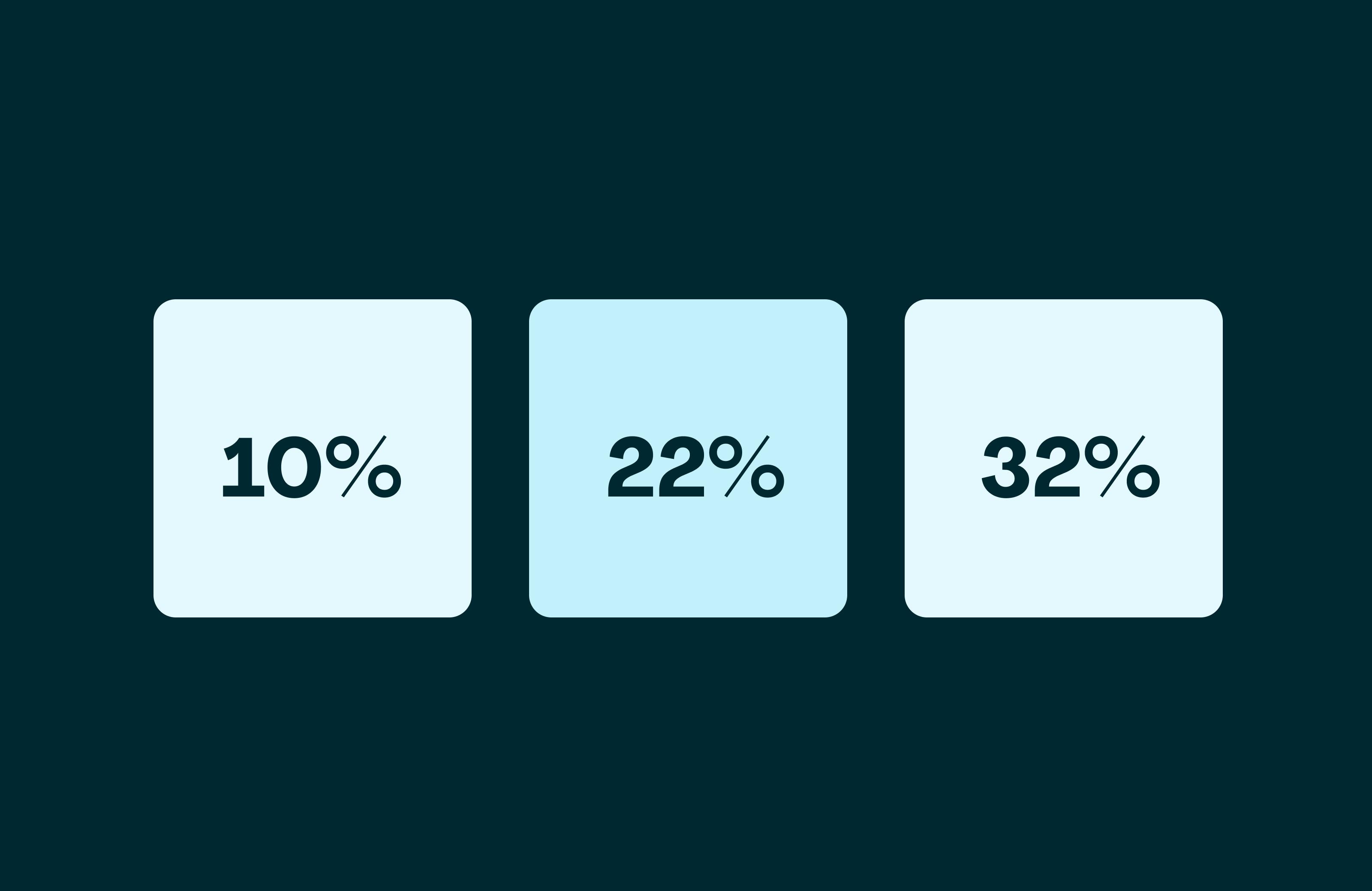What Tax Bracket Am I In? A Complete Guide for 2024 Tax Year
author
Rosa Strawbridge
published
Jan 27, 2025
categories
PDF editing
read time
4 mins

Looking for answers about your tax bracket for the 2024 tax year? Whether you've got a new job, received a raise, or just want to better understand your taxes, you're in the right place. We'll break down exactly how tax brackets work, help you find your bracket, and show you how to file with confidence – plus get access to all the tax forms you need, free.
Table of Contents
1. The basics: tax brackets explained
2. The big misconception (that everyone gets wrong!)
3. How to figure out your own bracket
4. Tax planning tips
5. FAQs (because we know you're wondering)
6. Ready to take action?
- 1. The basics: tax brackets explained
- 2. The big misconception (that everyone gets wrong!)
- 3. How to figure out your own bracket
- 4. Tax planning tips
- 5. FAQs (because we know you're wondering)
- 6. Ready to take action?
share this post
Let's talk taxes! 😅 We know, we know – not exactly the most thrilling dinner conversation. But understanding your tax bracket is like knowing the rules of a game – once you get it, you can play smarter. And who doesn't love being smart with their money?
The basics: tax brackets explained
First things first: tax brackets aren't like regular brackets (sorry, March Madness fans!). Think of them more like a layered cake, where each layer gets a different treatment. Your money climbs up these layers, and each layer gets taxed at a different rate.
For the 2024 Tax Year, here's how these "money cake layers" look:
For single filers:
- 10%: $0 to $11,600
- 12%: $11,601 to $47,150
- 22%: $47,151 to $100,525
- 24%: $100,526 to $191,950
- 32%: $191,951 to $243,725
- 35%: $243,726 to $609,350
- 37%: $609,351 or more
For married filing jointly:
- 10%: $0 to $23,200
- 12%: $23,201 to $94,300
- 22%: $94,301 to $201,050
- 24%: $201,051 to $383,900
- 32%: $383,901 to $487,450
- 35%: $487,451 to $731,200
- 37%: $731,201 or more
The big misconception (that everyone gets wrong!)
Here's where people often get tripped up – and we don't mean like falling over their shoelaces! Many folks think that if they move into a higher tax bracket, ALL their money gets taxed at that higher rate.
Plot twist: That's not how it works at all!
Let's break it down with a fun example:
Meet Sarah, who makes $60,000 a year (single filer). She's in the 22% tax bracket, but here's how her money actually gets taxed:
- First $11,600: 10%
- Next $35,550 ($11,601 to $47,150): 12%
- Final $12,850 ($47,151 to $60,000): 22%
How to figure out your own bracket
- Start with your total income (all those W-2s and 1099s!)
- Subtract your deductions (standard deduction for 2024 is $14,600 for single filers, $29,200 for married filing jointly)
- What's left is your taxable income – that's what determines your bracket!
Need the right forms? We've got your back! Here are some handy links:
- Form 1040 - The star of the show
- Schedule A - For those itemized deductions
- Form W-4 - For setting up the right tax withholding at work
Tax planning tips
Want to be tax-savvy? Here are some ideas that might help:
- Retirement contributions: Like hiding money in your sock drawer, except it's legal and saves you tax dollars!
- Charitable giving: Do good, feel good, and maybe pay less in taxes? Triple win!
- Education expenses: Learning new things might just save you money. How's that for motivation?
FAQs (because we know you're wondering)
Q: Does getting a raise mean I'll lose money by moving to a higher bracket? A: Nope! That's a myth bigger than the Loch Ness Monster. Only the money above the bracket threshold gets taxed at the higher rate.
Q: What about state taxes? A: That's like a whole other game show! Each state has its own rules. Some states don't even have income tax (looking at you, Florida! 🌴)
Q: How often do tax brackets change? A: They get adjusted yearly for inflation. It's like your phone updating, but with more zeros involved.
Ready to take action?
Now that you're practically a tax bracket expert (feel free to add that to your resume), why not get started on those tax forms? All the forms mentioned above are available in our Template Discovery – ready to be filled, signed, and filed. No paper cuts required!
Remember, taxes don't have to be taxing (sorry, we couldn't resist that one!). With the right tools and knowledge, you can tackle your taxes with confidence.
share this post